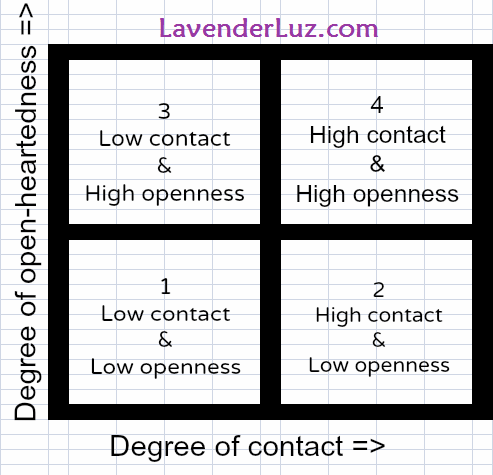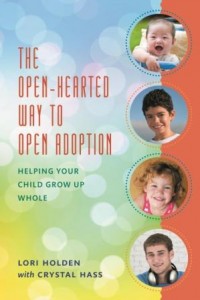Today we offer the second guest post from Lori Holden, an emerging expert on open adoption. Her book, The Open-Hearted Way to Open Adoption: Helping Your Child Grow Up Whole will be published in the spring, and early reviews indicate it will become the latest go-to manual for parents navigating the journey to parent in open adoption.
Lori responds to the question we posed: You ask a great question, Adoption STAR, a question that needs to be asked and pondered by each person exploring open adoption.
I bet if you asked a bunch of people who know about adoption what open adoption is, you would get variations on the theme of contact, that there is a continuum of contact, and that each adoption will find its way on to a point on the continuum. On one end might be a fully closed adoption, meaning no contact and no identifying information. At the other end people might place full openness — adoptive and birth parents treating each other as extended families.
But as we move into the third decade of the movement toward open adoptions, I submit that we should stop using contact as our measure. Why?
Because contact≠ openness. Contact is not the same as openness.
Further, because of the need to consider contact and openness separately, we need a better tool than a spectrum. How about a grid?
Let’s look at each of the boxes:
Box 1 is what we used to consider a closed adoption. Not only is there very little contact or identifying information available to the child, but the adoptive parents are ill-equipped to deal with adoption openly. They may have unresolved grief left over from their infertility struggles. They may have been counseled to act “as if” their child were born to them. They may not be comfortable having tough conversations and confronting “icky” feelings about adoption, either theirs or their child’s as she grows and advances cognitively. This box may be the most crippling for a child to grow up in, the least conducive to integrating her identity from both her sets of parents.
Box 2 is where there is contact with birth family, maybe through exchanges of photos, emails or even meetings. But what’s lacking is what Jim Gritter calls the Spirit of Open Adoption. Adoptive parents may harbor feelings of guilt, envy, distaste or even superiority about their child’s birth family, either consciously or subconsciously (by no means am I saying that all do, but rather the possibility that some do). These adoptive parents may enjoy having all the power they hold in the relationship, rather than inviting the first parents to co-create their open adoption relationship. Because of the lack of openness here, the child is still at a disadvantage, feeling split between her clan of biology and her clan of biography.
Box 3 is at play in many foster and international adoptions, as well as some domestic infant adoptions. It involves low contact but high openness. Distance, logistics, safety issues or the unavailability of first parents may make actual contact not possible or not wise, but the adoptive parents in this box still parent with openness. They deal with their own emotions about their adoption story mindfully, and they are able to open their hearts to their child as she processes her adoption story and integrates her identity. A child growing up in Box 3 is in a good position to have the space and support to do just that.
Box 4 is where the birth family is considered extended family, both in contact and in openness. This relationship may be no different than one with a beloved uncle, sister-in-law or grandmother (or even one not so beloved!). The relationships are child-centered and inclusive. The child is claimed by and able to claim both her clans, thereby helping her integrate all her pieces as she grows through her toddler and school years, through her tweens and teens and into adulthood. She is not pulled to choose or rank one family over the other and she is therefore not split — she is free to integrate herSelves and pursue wholeness in her identity.
I encourage parents via adoption to consider both aspects of open adoption — contact and openness — as they build and sustain a child-centered family constellation.
Lori Holden writes regularly at LavenderLuz.com about parenting and living mindfully. Her book, The Open-Hearted Way to Open Adoption: Helping Your Child Grow Up Whole, is available for pre-order on Amazon. She has written for Adoptive Families magazine, Parenting magazine and for BlogHer and MileHighMamas.com, a Denver Post site. On Twitter she’s @LavLuz and you can also find her on Facebook. She practices her Both/And technique with dark chocolate and red wine (though not at the same time).
Lori Lavender Luz
 Yin yanging my way.
Yin yanging my way.
Author of The Open-Hearted Way to Open Adoption, available March, 2013.
Recently said Do something




